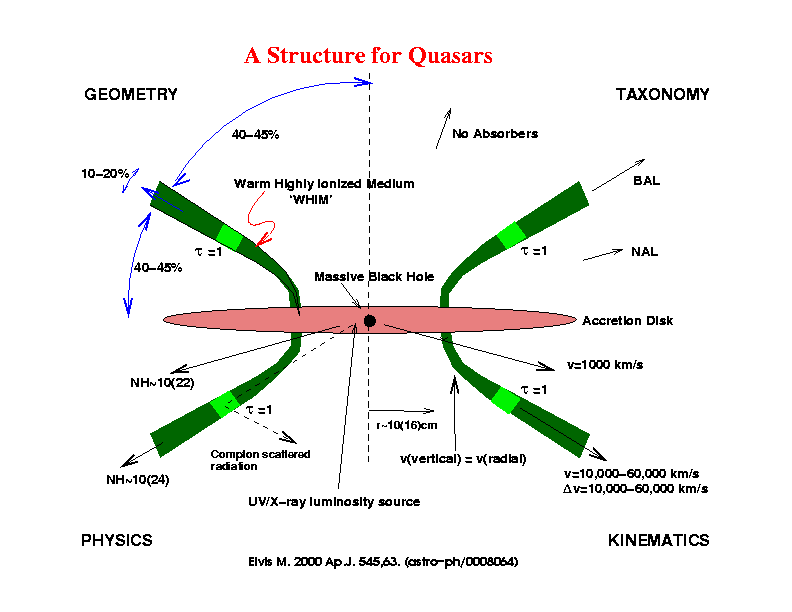A Structure for Quasars

The picture shows a 2-dimensional sketch of the outflowing wind of a quasar (Elvis 2000, Astrophysical Journal, vol.545, p.63-76).
In the funnel-shaped disk wind Elvis (2000) model a wind arises from a restricted range of radii on the accretion disk around the central black hole. Initially the wind makes a large angle to the disk plane (and so is roughly cylindrical). The wind is accelerated radially (by either radiation pressure - as in a hot O-star - or by being trapped on magnetic field lines - as in a young T Tauri star) and so becomes a hollow conical flow at some point well above the disk. The opening angle of the cone is $\sim$60$^{\circ}$ angle to the disk axis. Looking through the quasi-cylindrical part of the wind we see UV and X-ray warm absorbers. Because we are looking through a flattened structure, scattering off the wind produces polarization. When we look near to the rotation axis our line of sight misses the wind altogether and we see no absorption features. (The cone opening angle is simply set by the ratio of AGNs with and without UV/X-ray absorbers; this is about 1.) Looking down we see a highly symmetric structure, so polarization is weak. A cool phase of this wind emits the optical/UV high ionization broad emission lines (HIBELs, e.g. CIV). The low ionization BELs (LOBELS, e.g. MgII) come from the outer disk (Leighly \& Moore 2004). As the wind turns to the radial it is accelerated; looking down the radial direction through this accelerating gas we see the Broad Absorption Lines (BALs). The BAL wind is marginally Thompson thick, producing the observed electron scattering signatures seen in BALs (Ogle et al. 1999) and Warm Absorbers (Leighly et al. 1997). Several previously puzzling features of quasar spectra fall out as a natural consequence of this structure (Elvis 2003). Successful predictions suggest that the model is on the right track.